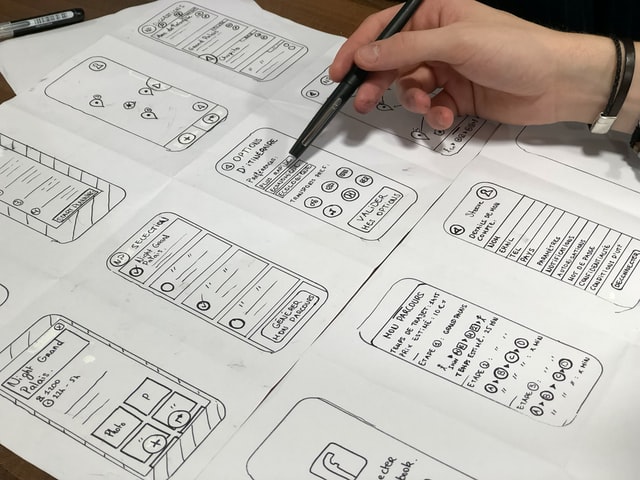In today’s fast-paced and ever-evolving software development landscape, the need for effective and efficient methodologies has never been greater. Teams are required to deliver high-quality products faster while maintaining flexibility to adapt to changing requirements and customer feedback. Agile and Scrum are two of the most popular frameworks used by development teams worldwide to address these challenges. Agile focuses on iterative progress, flexibility, and customer collaboration, while Scrum provides a structured yet adaptable approach to managing and executing projects. Together, they enable teams to work more collaboratively, produce valuable results faster, and continuously improve their processes.
This article explores the many benefits of Agile and Scrum in modern development teams, emphasizing how these methodologies can enhance productivity, foster better communication, and improve product quality. Whether you are part of a small startup or a large enterprise, implementing Agile and Scrum can lead to more effective project management, smoother collaboration, and a stronger focus on delivering value to customers. As businesses increasingly turn to digital transformation, understanding the advantages of Agile and Scrum is essential for staying competitive and delivering high-quality software in a timely manner.
What is Agile?
Agile is a project management and software development methodology that emphasizes flexibility, collaboration, and iterative progress. It is based on the principles outlined in the Agile Manifesto, which was created in 2001 by a group of software developers who sought to create a more efficient and adaptive way of developing software. At its core, Agile focuses on delivering small, functional pieces of a product in short iterations, known as sprints, rather than following a rigid, linear development process. This allows teams to respond to changing requirements, emerging technologies, and customer feedback quickly and effectively.
The Agile methodology encourages a close working relationship between cross-functional teams, stakeholders, and customers. It promotes regular communication, collaboration, and feedback to ensure the product meets user needs and expectations. Agile also emphasizes continuous improvement through retrospectives, where teams reflect on their processes and find ways to enhance efficiency and quality. Ultimately, Agile’s goal is to increase the speed and flexibility of product delivery while ensuring the product is high-quality and aligned with customer needs.
What is Scrum?
Scrum is a specific framework within the Agile methodology designed to help teams work together efficiently to develop and deliver high-quality products. It provides a structured yet flexible approach to project management, breaking down complex projects into smaller, manageable tasks. Scrum is based on iterative cycles called sprints, which typically last between one and four weeks, during which teams focus on completing a specific set of deliverables. The framework encourages constant collaboration, transparency, and feedback throughout the project.
In Scrum, there are defined roles, events, and artifacts to guide the development process. The key roles in Scrum include the Product Owner, who is responsible for managing the product backlog and prioritizing features; the Scrum Master, who facilitates the Scrum process and ensures the team follows Scrum practices; and the Development Team, which is responsible for delivering the work during each sprint. Scrum also involves several key events, such as Sprint Planning, Daily Scrum (Standup), Sprint Review, and Sprint Retrospective. These events ensure regular communication, transparency, and opportunities for improvement. Scrum artifacts include the Product Backlog, a prioritized list of features and tasks, and the Sprint Backlog, a subset of the Product Backlog selected for the current sprint. Through its structured framework, Scrum enables teams to focus on delivering high-value increments of a product, ensuring continuous progress and adaptability.
Which Benefits of Agile and Scrum for Modern Development
Agile and Scrum offer several key benefits for modern development teams, making them ideal frameworks for handling the fast-paced and constantly evolving nature of software projects. These benefits include:
Faster Time-to-Market
Agile and Scrum enable teams to deliver products incrementally through short iterations or sprints. By focusing on delivering small, functional parts of the product regularly, teams can release valuable features to customers faster. This iterative approach reduces the time it takes to bring a product or new feature to market, allowing companies to stay competitive and respond quickly to customer demands.
Increased Flexibility and Adaptability
Agile promotes continuous feedback and collaboration with stakeholders, allowing development teams to adapt quickly to changing requirements or unforeseen challenges. Scrum’s structure of regular reviews and retrospectives enables teams to reflect on their progress and make necessary adjustments in the next sprint. This level of flexibility ensures that products remain aligned with the evolving needs of customers and the market.
Improved Product Quality
Agile emphasizes regular testing and continuous integration, which helps identify defects early in the development process. Scrum encourages teams to complete working increments of the product at the end of each sprint, promoting regular reviews and adjustments to improve the product’s quality. By focusing on high-priority features and iterating on them regularly, teams can ensure they are delivering value and meeting customer expectations.
Enhanced Collaboration and Communication
Agile and Scrum promote daily stand-ups and regular meetings, fostering transparent communication and collaboration between team members. Scrum teams are cross-functional, which allows for a more collaborative work environment where different perspectives are valued. The constant feedback loop also ensures that issues are addressed quickly, enhancing teamwork and problem-solving.
Customer-Centric Focus
Both Agile and Scrum emphasize the importance of customer feedback and involvement throughout the development process. The product backlog in Scrum is prioritized based on customer value, and teams work on delivering the most valuable features first. This ensures that the product being developed closely aligns with customer needs and expectations, leading to higher satisfaction and better outcomes.
Increased Team Motivation and Ownership
Agile and Scrum promote a self-organizing team environment where members are empowered to make decisions about their work. This autonomy fosters a sense of ownership and responsibility among team members, which in turn leads to higher motivation and productivity. Teams can adjust their work based on their experiences and continuously improve their processes, resulting in greater job satisfaction and better performance.
Conclusion
Agile and Scrum provide powerful frameworks that enable modern development teams to thrive in an environment where speed, flexibility, and customer satisfaction are paramount. By emphasizing iterative development, continuous feedback, and close collaboration, these methodologies help teams deliver high-quality products faster while remaining adaptable to changing requirements and market conditions. Agile and Scrum foster a culture of transparency, accountability, and continuous improvement, which boosts team morale and productivity. As businesses strive to stay competitive and meet evolving customer needs, adopting Agile and Scrum practices can significantly enhance a team’s ability to produce valuable, customer-centric solutions efficiently. Ultimately, the benefits of Agile and Scrum extend beyond just improving processes—they help create a more responsive, effective, and innovative development environment.



